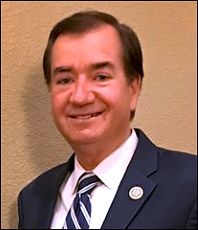The US Census Bureau released the California population numbers, and those predicting that the San Francisco Bay Area and Los Angeles County would reveal significant population downturns were correct. In all, only 20 Golden State districts are over-populated compared with 33 that must gain inhabitants. Of the seats falling behind the population growth rate, 27 are held by Democratic members and six by Republicans. Of the over-populated states, 13 are Republican-controlled while seven Democratic seats must shed inhabitants.
The two most over-populated seats are in the Inland Empire, where Rep. Mary Bono Mack’s 45th district and Ken Calvert’s 44th CD have 211,304 more people than required and 141,851, respectively. Rep. Buck McKeon’s 25th district, also partially in the Inland Empire, is next with an overage of 141,415 individuals.
The overwhelming growth pattern occurred among Hispanics. Despite California gaining almost 3.4 million residents, the state did not add congressional representation for the first time in its history. Though Hispanic growth exploded during the decade, increasing by 27.8%, the non-Hispanic population grew at a paltry 1.5%, for a statewide gain of 10%. This is right at the national average of 9.7% and explaining why the state remains constant with 53 districts. The California Anglo population is now only a slight plurality. Whites account for just 40.1% of the population with Hispanics right behind at 37.8%. Huge growth was also recorded within the California Asian population. They now register a total of 13%, up from 11% in 2000. African-Americans remained constant at 6% of the Golden State population make-up.
It is clear that Californians are moving away from the coastal cities and into the inland regions of the state. Ten Bay Area congressional districts (including the Monterey Peninsula) must gain people while only two are over-populated, and those share territory with communities in the central part of the state. In the Central Valley (Modesto, Fresno, Madera, Merced, Bakersfield), all five seats are over-populated. This means there will be a shift in representation from the Bay Area toward the Central Valley. In what configuration the new California Redistricting Commission decides to draw the seats, however, is anyone’s guess at this point in time. It’s a sure thing that at least one Bay Area representative will have to add substantial new territory from an area far different from his or her current constituency. This could lead to some interesting primary and general elections in 2012.
The same pattern holds true for southern California.
Because of California’s dramatic population shifts and the emergence of the new redistricting commission, the Golden State is truly a redistricting wild card. Much will happen here in the coming months.
__________________________________________________
For further detailed insights, to sign up for my daily email updates, or to sign up to track specific issues or industries, please contact me at PR***@pe*******************.com.

